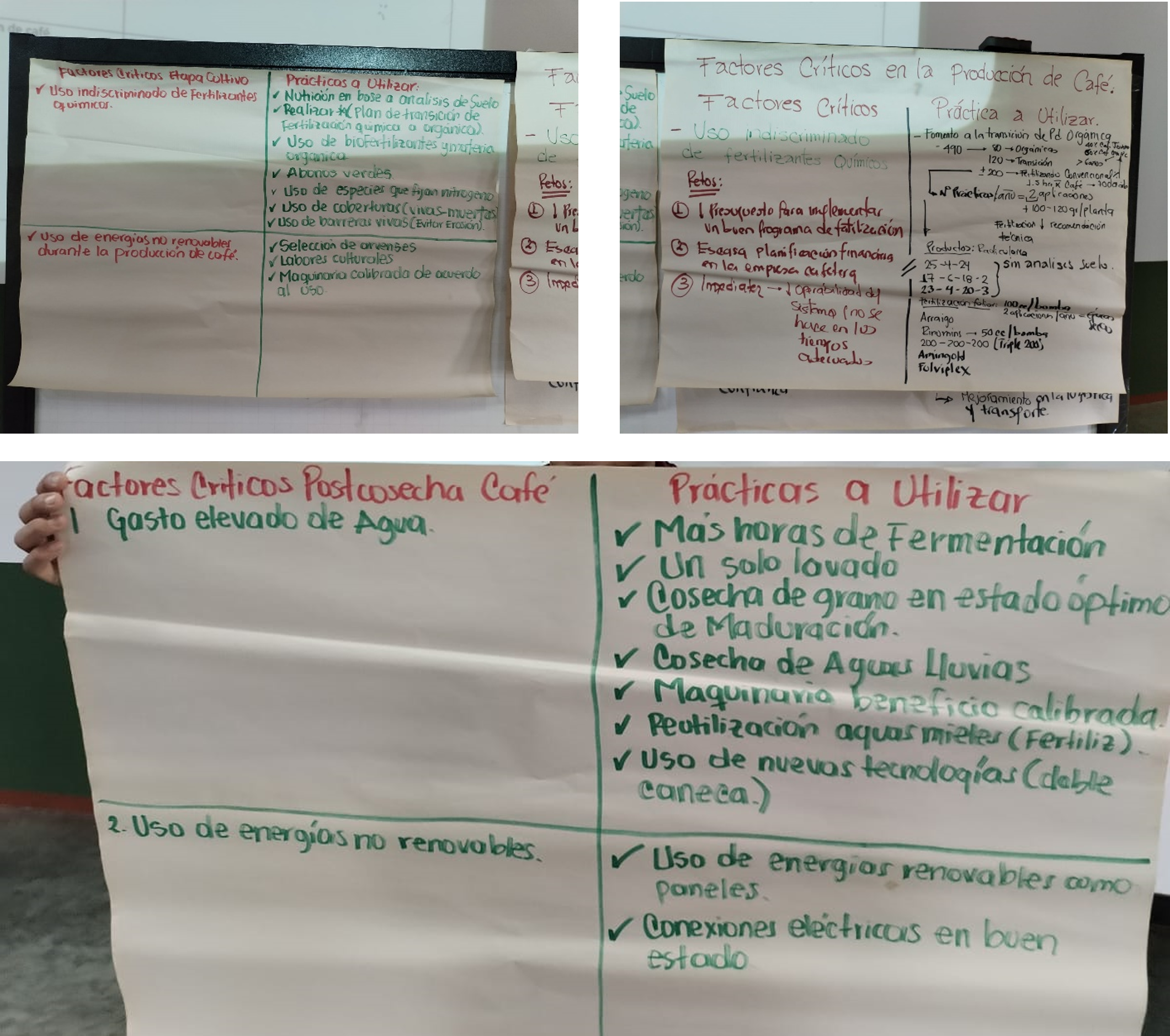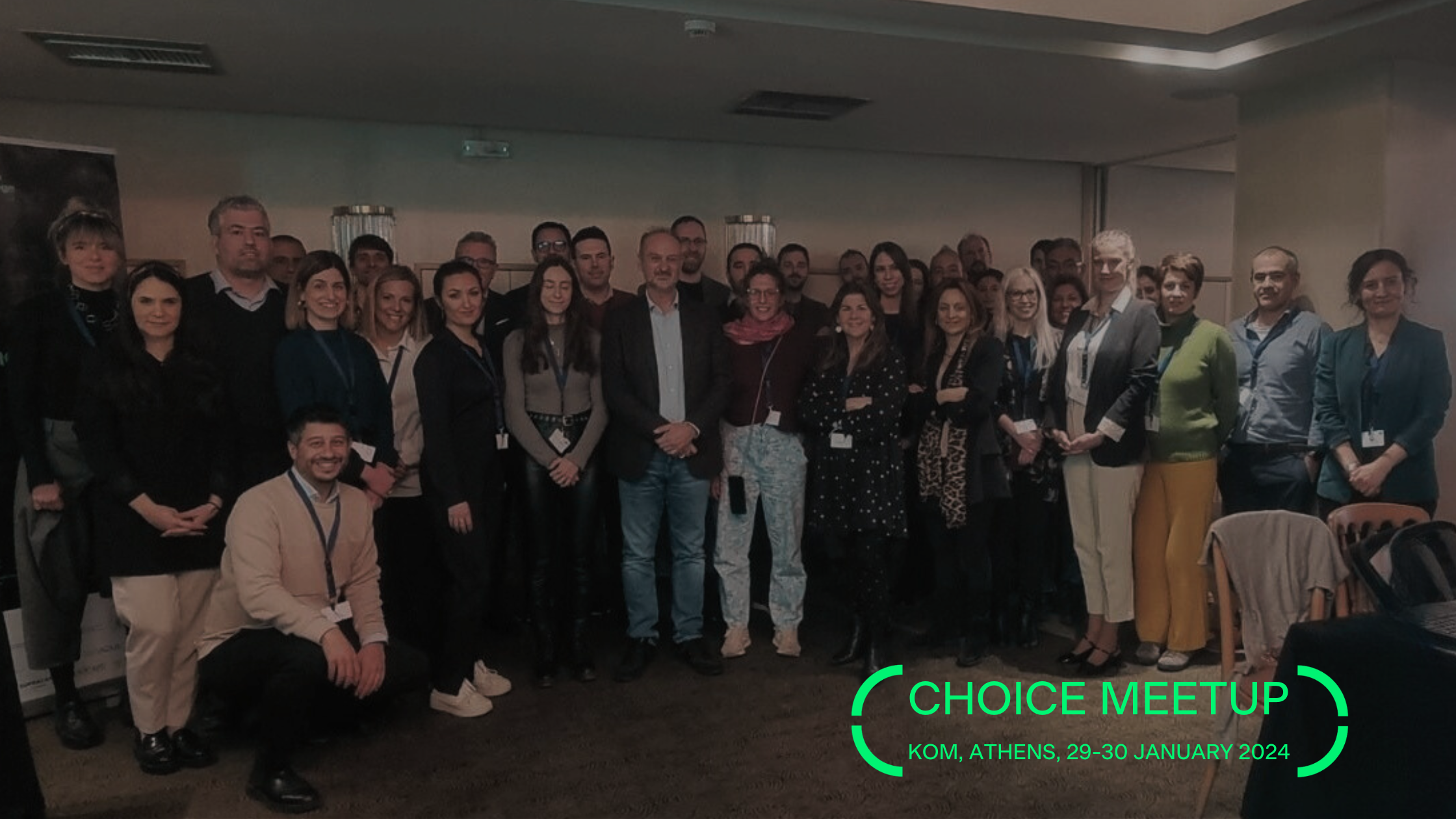
CHOICE’s Colombian Pilot Progresses with Second Participatory Lab on Sustainable Coffee Production
On February 17, 2025, the CHOICE Spanish Pilot convened its second Participatory Lab in Cajibio, Colombia, bringing together representatives from AMUCC, SUPRACAFÉ, TECNiCAFÉ, CAFICAUCA, and the Regional Environmental Corporation of Cauca (CRC). The session, hosted by SUPRACAFÉ and TECNiCAFÉ, focused on advancing the pilot’s objectives of reducing the environmental impact of coffee production through participatory dialogue and technical assessment. The pilot specifically engages women coffee producers, highlighting their critical role in leading sustainability transitions in rural Colombia.
The Colombian pilot with a focus on women coffee producers in the Cauca region, is part of CHOICE’s broader mission to promote sustainable behavior in food systems. Following the initial participatory lab held in December 2024, this second session sought to refine critical environmental impact areas, assess current practices, and identify feasible, community-led solutions that support climate mitigation goals.
Objectives of the Second Lab
The workshop was designed to build on the outcomes of the first lab and align actions with the CHOICE modeling framework. The specific objectives included:
- Quantify the environmental impact of key production factors identified during the first lab, including water use, greenhouse gas emissions, and energy consumption.
- Identify and evaluate context-relevant practices to reduce the use of chemical fertilizers and non-renewable energy.
- Inform the technological adaptation of the FABLE (Food, Agriculture, Biodiversity, Land-use, and Energy) model for CHOICE.
- Promote knowledge exchange between local actors and co-develop strategies to increase sustainability in coffee cultivation and processing.
Critical Impact Areas in Coffee Production
The session opened with a presentation of findings from the first lab, which identified three major environmental hotspots in coffee production:
- High use of chemical fertilizers during cultivation and maintenance.
- Excessive water consumption during post-harvest processes.
- Dependence on non-renewable energy sources in both field and processing stages.
Participants were divided into two working groups to analyze these issues further and propose locally feasible mitigation practices.
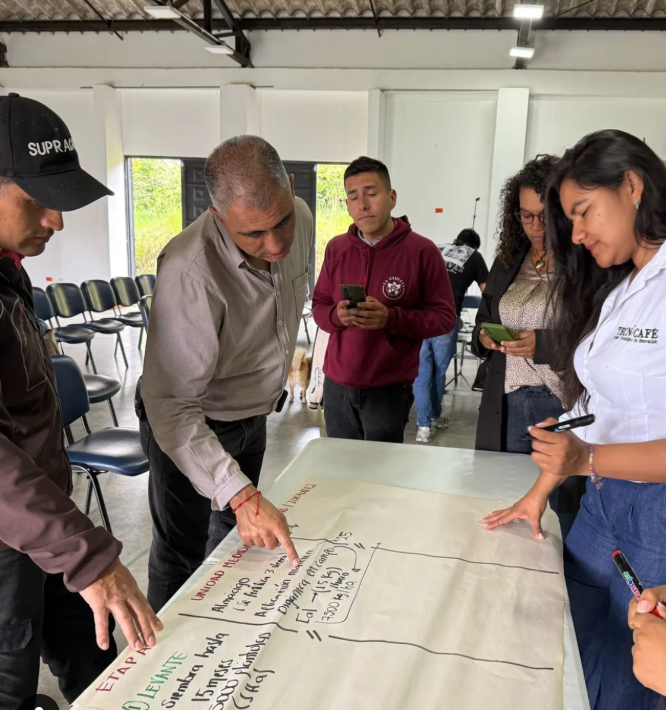
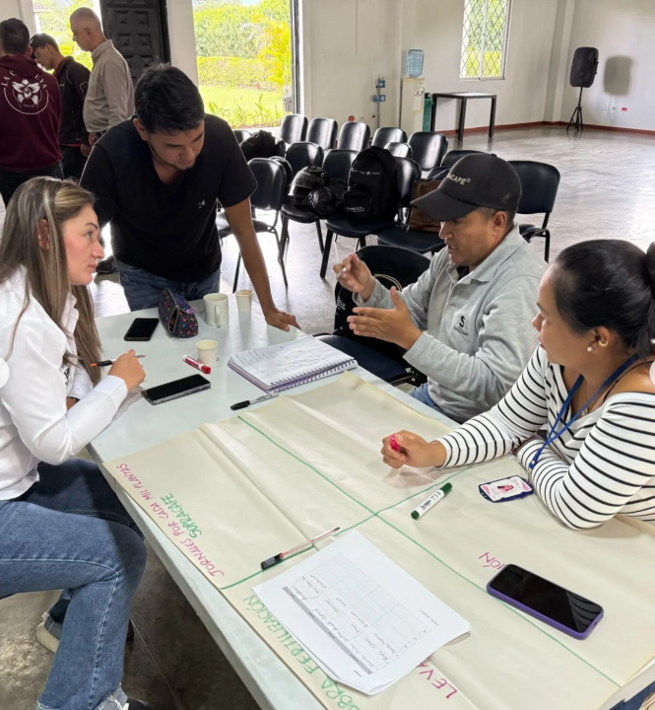
Toward Climate-Smart Coffee: Practices Proposed by Producers
For each identified hotspot, stakeholders collaborated to propose and prioritize sustainable alternatives:
Chemical Fertilizers:
Both groups emphasized the transition from synthetic to organic practices, suggesting:
- Soil analysis-based fertilization,
- Use of biofertilizers, compost, and green manures,
- Implementation of nitrogen-fixing plants and cover crops,
- Development of municipal-scale biofactories to produce organic inputs locally.
Non-Renewable Energy Use:
Proposed solutions included:
- Adoption of energy-efficient and calibrated machinery,
- Introduction of electric-powered tools (e.g., electric weed trimmers),
- Coordinated community transport for agricultural inputs to reduce fuel consumption.
Water Use in Post-Harvest:
To address water-intensive practices, participants recommended:
- Harvesting coffee at optimal ripeness to reduce water requirements,
- Extending fermentation times to enable single-rinse processes,
- Reuse of wastewater from coffee washing (mieles),
- Implementation of low-water technologies, including dual-drum washing systems,
- Rainwater harvesting and improved calibration of processing machinery.
Understanding Fertilization and Labour Inputs
Participants also contributed detailed data on current fertilization practices and labor requirements in their cooperatives. These figures are essential for calibrating CHOICE’s integrated assessment models. For example:
- SUPRACAFÉ uses 30 bags of fertilizer per hectare in production, applying nearly 300g per plant.
- AMUCC applies 100g per plant, complemented with compost and soil-injected biofertilizers.
Labor inputs per production phase were also quantified, with fertilization requiring up to 3 workdays per 5,000 plants annually, and post-harvest processing ranging from 0.31 to 1.7 workdays per 1,000 kg of coffee cherries, depending on the group.
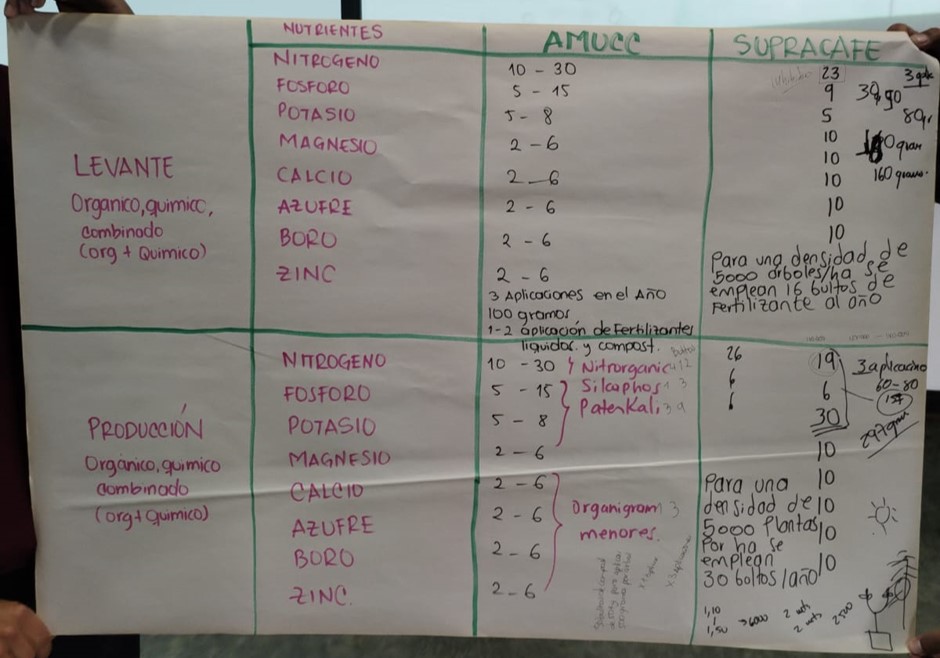
Looking Ahead: Data-Driven Action and Model Integration
The outputs from this session provide valuable data for refining the FABLE model within CHOICE, enabling more accurate simulation of sustainable pathways for smallholder coffee production in Colombia. The engagement of local actors and the contextual relevance of proposed practices will ensure that the model reflects real-world constraints and opportunities.
The third Participatory Lab will take place later this year, focusing on finalizing the sustainability strategy and preparing for the launch of the CHOICE campaign with AMUCC and SUPRACAFÉ women coffee producers. This work supports Colombia’s broader efforts toward climate-resilient agriculture, gender equity in rural development, and responsible land-use planning.
Learn more here about the Colombian Pilot and how CHOICE is supporting sustainable food transitions across regions and sectors.

